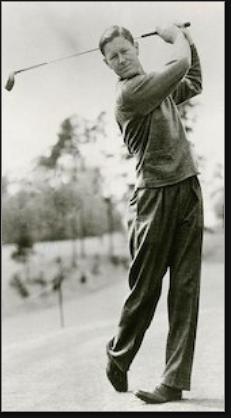Great Moments: Golf
 POLE POSITION POLE POSITION
For two years at the height of the Great Depression, the Ridgewood Country Club claimed as its assistant pro the one and only Byron Nelson. Nelson, a native Texan, was in his mid-20s. He was just four years into his career as a professional golfer when he arrived in New Jersey after meeting with Ridgewood’s head pro George Jacobus during the Masters in Augusta. He spent 1935 and 1936 on the staff at $400 a season.
While RCC was Nelson’s home base he better than doubled his salary in local winnings—$400 for winning the 1935 New Jersey State Open and $500 for winning the 1936 Metropolitan Open. He also shot a 30-33 at Ridgewood for a course record of 63 that still stands. In 1990, the club celebrated its centennial by hosting the US Senior Open. Nelson was on hand as honorary tournament chairman. Lee Trevino edged Jack Nicklaus for the title.
One day during Nelson's first summer as assistant pro, several caddies bet him he couldn’t hit the club’s flagpole—about 275 feet away—with a middle iron in three tries. They combined their pocket change to put up a 55-cent purse. Nelson grabbed a 3-iron and clanked the ball off the pole on his second shot.
“The caddies stared with their mouths open,” Nelson recalled. “I picked up my nickels, gave them a little smile and walked away.”
A plaque on the slate deck outside the pro shop commemorates Nelson’s shot.
THIS IS U.S.
The fifth edition of the Ryder Cup was held in New Jersey, at the Ridgewood County Club in Paramus on September 28th and 29th, 1935. . The US and British had split the previous four meetings, with the last one  going to the Brits, in 1933. Ten golfers were chosen for each team. The US team featured Walter Hagen, Gene Sarazen, Horton Smith, Craig Wood and Olin Dutra—among the top names in American golf. Great Britain’s squad was captained by Charles Whitcombe and included his brothers, Ernest and Reg. Percy Alliss, who would play in a total of 8 Ryder Cups, was also on the team. His son, Peter, would become a leading golf commentator. going to the Brits, in 1933. Ten golfers were chosen for each team. The US team featured Walter Hagen, Gene Sarazen, Horton Smith, Craig Wood and Olin Dutra—among the top names in American golf. Great Britain’s squad was captained by Charles Whitcombe and included his brothers, Ernest and Reg. Percy Alliss, who would play in a total of 8 Ryder Cups, was also on the team. His son, Peter, would become a leading golf commentator.
The format for the first day was a match between four foursomes, with two teammates alternating shots. The second day consisted of eight singles matches. Each match was 36 holes, or twice around the course. One point was awarded for victory in each of the 12 matches, with a half-point for ties.
Hagen and Sarazen managed to put aside their competitive differences on the first day to defeat Alf Perry and Jack Busson. Perry had won the British Open the previous June. The Americans took three of the four first-day matches. The next day was a wipeout of the British. Alliss was the only Englishman to win his match, defeating Wood. Perry halved with Sam Parks, the winner of the 1935 US Open.
The final score was 9–3. Sarazen was one of four Americans to score 2 points. The others were Henry Picard, Pau Runyan and Johnny Revolta. Revolta was coming off a PGA Championship win.
|